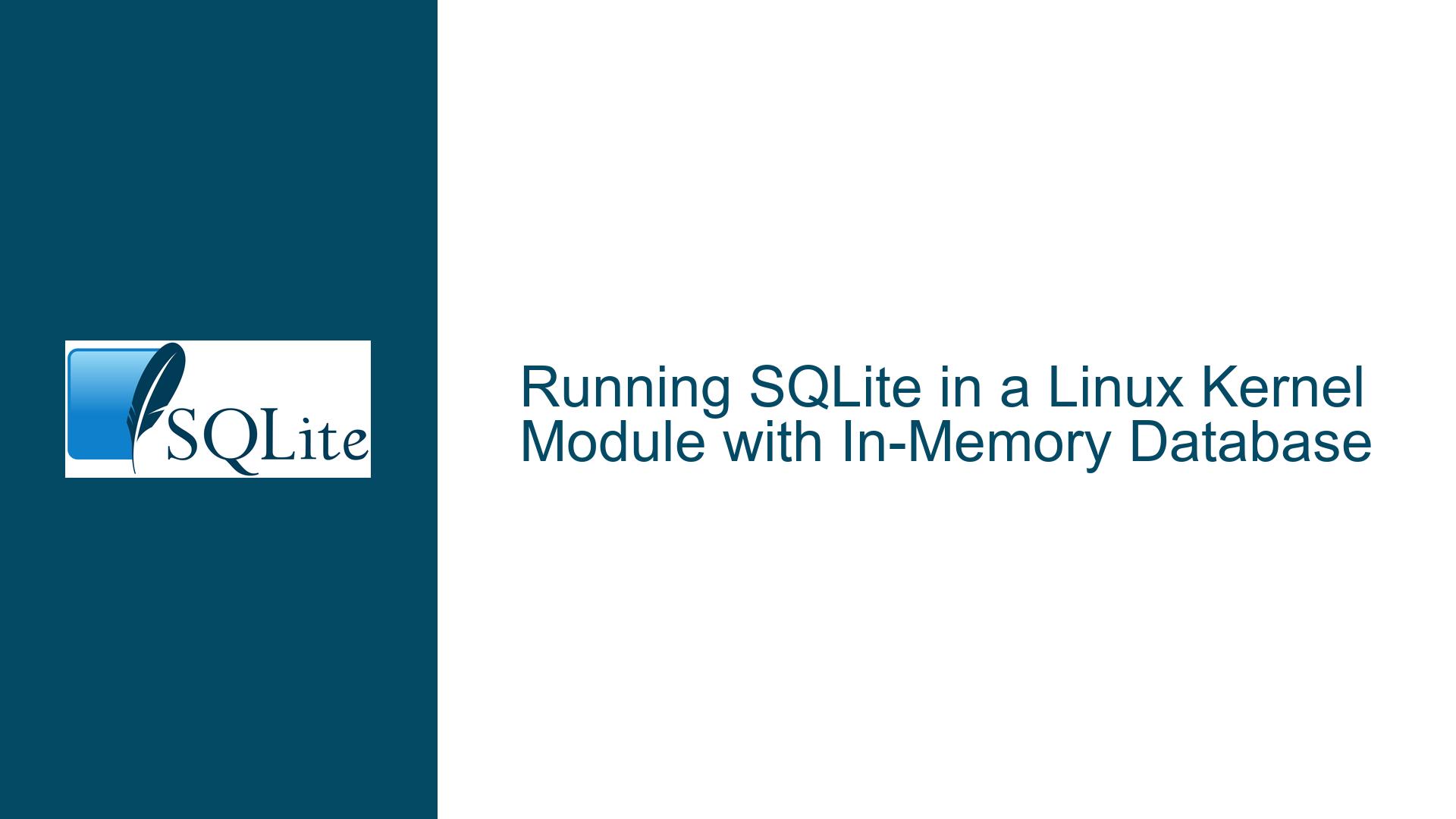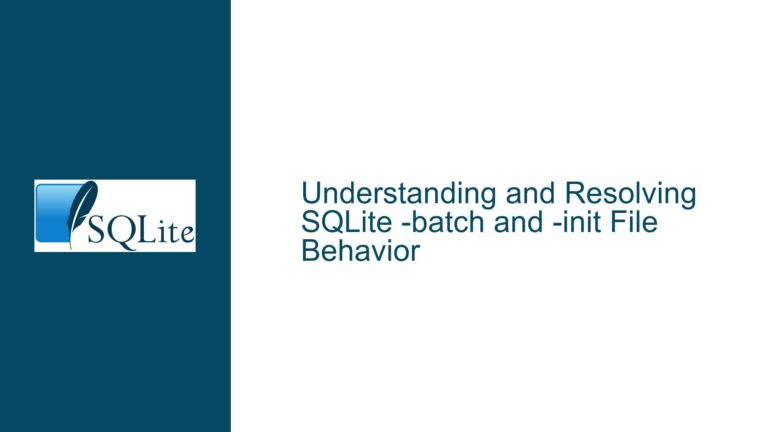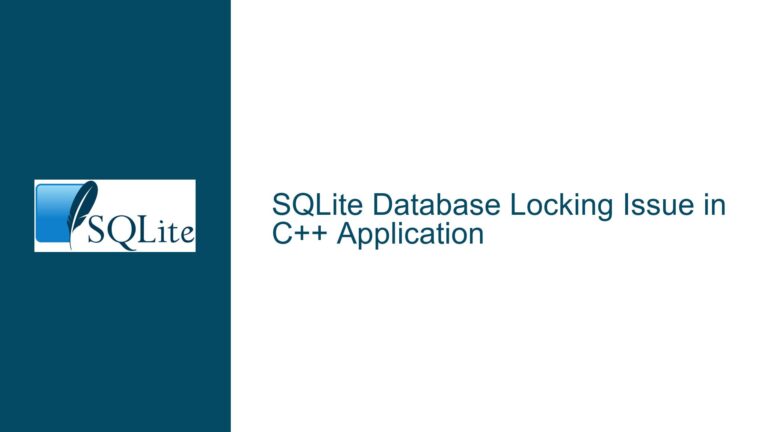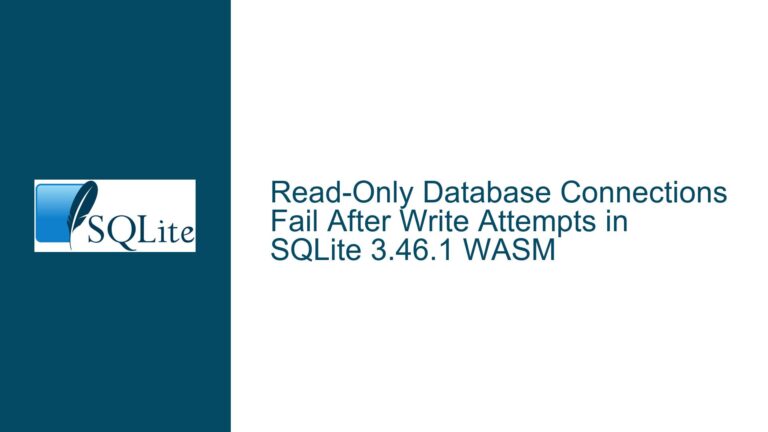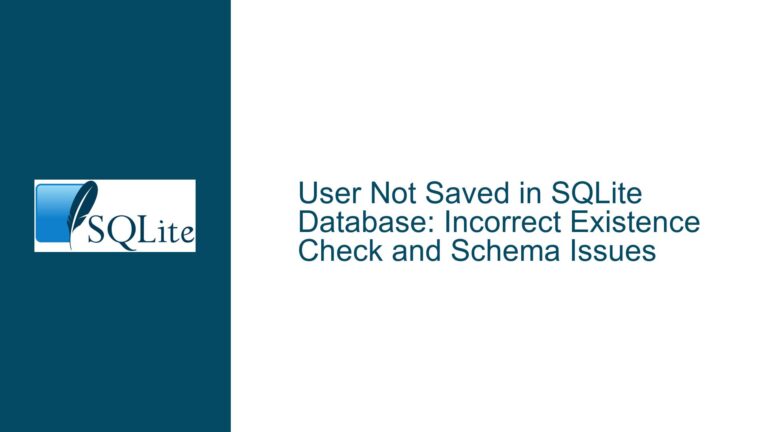Running SQLite in a Linux Kernel Module with In-Memory Database
Running SQLite in a Linux Kernel Module: Feasibility and Constraints
Running SQLite in a Linux kernel module is an unconventional use case that raises several technical challenges and considerations. SQLite is typically designed to operate in user space, where it can leverage standard libraries and system calls for file handling, memory allocation, and other operations. However, the Linux kernel operates in a highly restricted environment where many of these facilities are either unavailable or must be handled differently. This post explores the feasibility of running SQLite in a Linux kernel module, focusing on an in-memory database, and provides a detailed analysis of the constraints, potential solutions, and troubleshooting steps.
Custom Memory Allocation and Kernel-Specific Constraints
One of the primary challenges of running SQLite in a Linux kernel module is the absence of standard user-space memory allocation functions. In user space, SQLite relies on functions like malloc() and free() for dynamic memory allocation. However, in the kernel, these functions are replaced by kernel-specific alternatives such as kmalloc(), kzalloc(), and valloc(). These kernel memory allocators are designed to handle the unique requirements of kernel space, such as contiguous memory allocation and the use of GFP (Get Free Pages) flags.
To adapt SQLite for kernel use, a custom memory allocator must be implemented. SQLite provides a mechanism for substituting its default memory allocator with a custom one, as documented in the SQLite memory allocation documentation. This custom allocator would need to map SQLite’s memory requests to kernel-specific functions like kzalloc() and kfree(). For example, the custom allocator could use kzalloc() to allocate zero-initialized memory blocks, ensuring that all memory used by SQLite is properly managed within the kernel environment.
Another critical consideration is the handling of file I/O operations. SQLite typically relies on standard file handling functions like fopen(), fread(), and fwrite() for persistent storage. However, these functions are unavailable in the kernel, and direct file access from kernel space is strongly discouraged due to security and stability concerns. Since the use case in question involves an in-memory database, this limitation can be circumvented by ensuring that the database remains entirely in memory and does not attempt to interact with the file system. This approach eliminates the need for file I/O but requires careful management of memory to prevent leaks or corruption.
Modifying SQLite Source Code for Kernel Compatibility
Adapting SQLite for use in a Linux kernel module would likely require modifications to the SQLite source code. The first step in this process would be to obtain a copy of the full SQLite source code and identify the components that rely on user-space libraries and system calls. These components would need to be replaced or modified to use kernel-specific alternatives.
For example, SQLite’s use of the standard C library functions for memory allocation, string manipulation, and other tasks would need to be replaced with kernel-compatible equivalents. This might involve creating wrapper functions that map standard C library calls to their kernel counterparts. Additionally, any code that interacts with the file system would need to be removed or disabled, as file I/O is not feasible in the kernel environment.
Another area of concern is threading. SQLite supports multi-threaded operation, but the threading model in the kernel is different from that in user space. Kernel threads are managed by the kernel itself and do not have the same capabilities as user-space threads. If the SQLite instance in the kernel module needs to support concurrent access, the threading implementation would need to be adapted to use kernel threads or workarounds such as mutexes and spinlocks.
Testing and Debugging in the Kernel Environment
Testing and debugging a SQLite instance running in a Linux kernel module presents unique challenges. Traditional debugging tools like GDB are not directly applicable to kernel code, and kernel panics or crashes can be difficult to diagnose. To address these challenges, it is essential to implement robust logging and error handling mechanisms within the kernel module.
Kernel logging functions like printk() can be used to output debug information to the kernel log, which can then be inspected using tools like dmesg. These logs can provide valuable insights into the behavior of the SQLite instance and help identify issues such as memory corruption, invalid pointer dereferences, or race conditions.
In addition to logging, it is important to thoroughly test the modified SQLite code in a controlled environment before deploying it in a production system. This might involve creating a dedicated test kernel module that exercises the SQLite functionality under various conditions, such as high memory pressure or concurrent access. Automated testing frameworks can be used to simulate these conditions and ensure that the SQLite instance behaves as expected.
Performance Considerations and Optimization
Running SQLite in a Linux kernel module introduces performance considerations that differ from those in user space. The kernel environment is optimized for low latency and high throughput, but these optimizations come at the cost of increased complexity and reduced flexibility. As a result, the performance of SQLite in the kernel may not match that of a user-space instance, particularly for complex queries or large datasets.
To optimize performance, it is important to minimize the overhead associated with memory allocation and deallocation. The custom memory allocator should be designed to efficiently handle SQLite’s memory requests, avoiding unnecessary fragmentation or contention. Additionally, the use of kernel-specific data structures and algorithms can help reduce the computational overhead of certain operations.
Another factor to consider is the impact of kernel preemption and interrupts on SQLite’s performance. In a preemptive kernel, higher-priority tasks can interrupt the execution of the SQLite instance, potentially leading to increased latency or inconsistent performance. To mitigate this, the kernel module can be configured to run in a non-preemptive mode or use real-time scheduling policies to ensure predictable execution.
Security Implications and Best Practices
Running SQLite in a Linux kernel module also raises security concerns. The kernel is a critical component of the operating system, and any vulnerabilities in the SQLite instance could potentially compromise the entire system. To minimize the risk of security issues, it is essential to follow best practices for kernel development, such as rigorous code review, static analysis, and thorough testing.
One specific concern is the handling of untrusted input. If the SQLite instance in the kernel module processes data from external sources, it is important to validate and sanitize this data to prevent injection attacks or buffer overflows. Additionally, the use of secure memory allocation functions like kzalloc() can help prevent information leaks by ensuring that memory is zero-initialized before use.
Another security consideration is the potential for privilege escalation. If the SQLite instance in the kernel module has access to sensitive data or system resources, it could be exploited by an attacker to gain elevated privileges. To mitigate this risk, the kernel module should be designed with the principle of least privilege in mind, granting access only to the resources necessary for its operation.
Alternatives to Running SQLite in the Kernel
Given the challenges and risks associated with running SQLite in a Linux kernel module, it is worth considering alternative approaches that achieve similar functionality without requiring kernel modifications. One such approach is to run SQLite in user space and use inter-process communication (IPC) mechanisms to exchange data with the kernel module.
For example, the kernel module could expose a set of syscalls or device interfaces that allow user-space processes to query or modify the in-memory database. This approach leverages the strengths of both user space and kernel space, allowing SQLite to operate in a more conventional environment while still providing low-latency access to kernel data.
Another alternative is to use a lightweight database specifically designed for kernel use. While SQLite is a versatile and widely-used database, it may not be the best fit for the constraints of the kernel environment. There are other databases and data structures, such as red-black trees or hash tables, that are better suited to the performance and memory requirements of kernel code.
Conclusion
Running SQLite in a Linux kernel module with an in-memory database is a technically challenging but potentially feasible endeavor. It requires careful consideration of memory allocation, file I/O, threading, and performance optimization, as well as thorough testing and debugging to ensure stability and security. While the use of SQLite in the kernel is unconventional, it can be achieved with the right modifications and precautions. However, given the complexity and risks involved, it is important to evaluate whether this approach is the best solution for the specific use case or if alternative approaches might be more appropriate.
